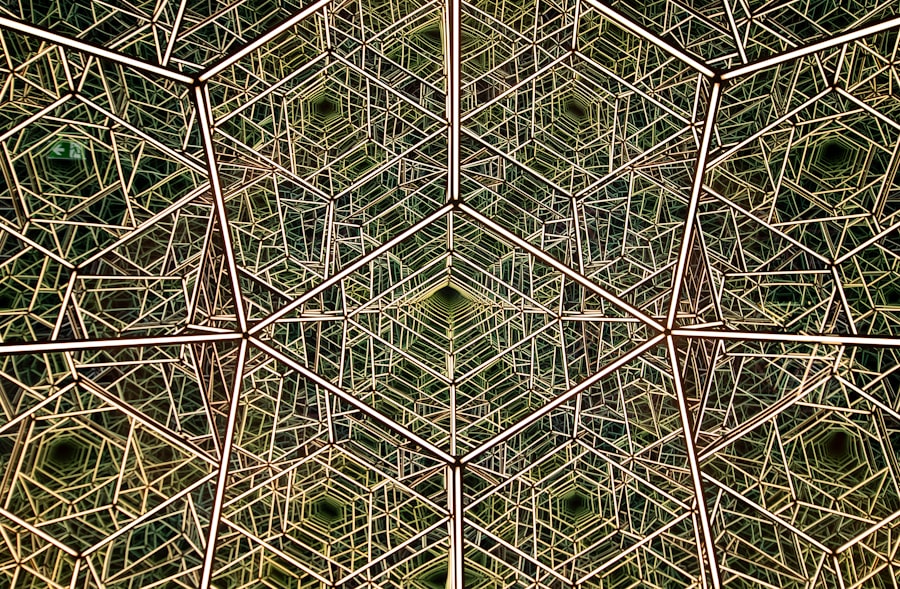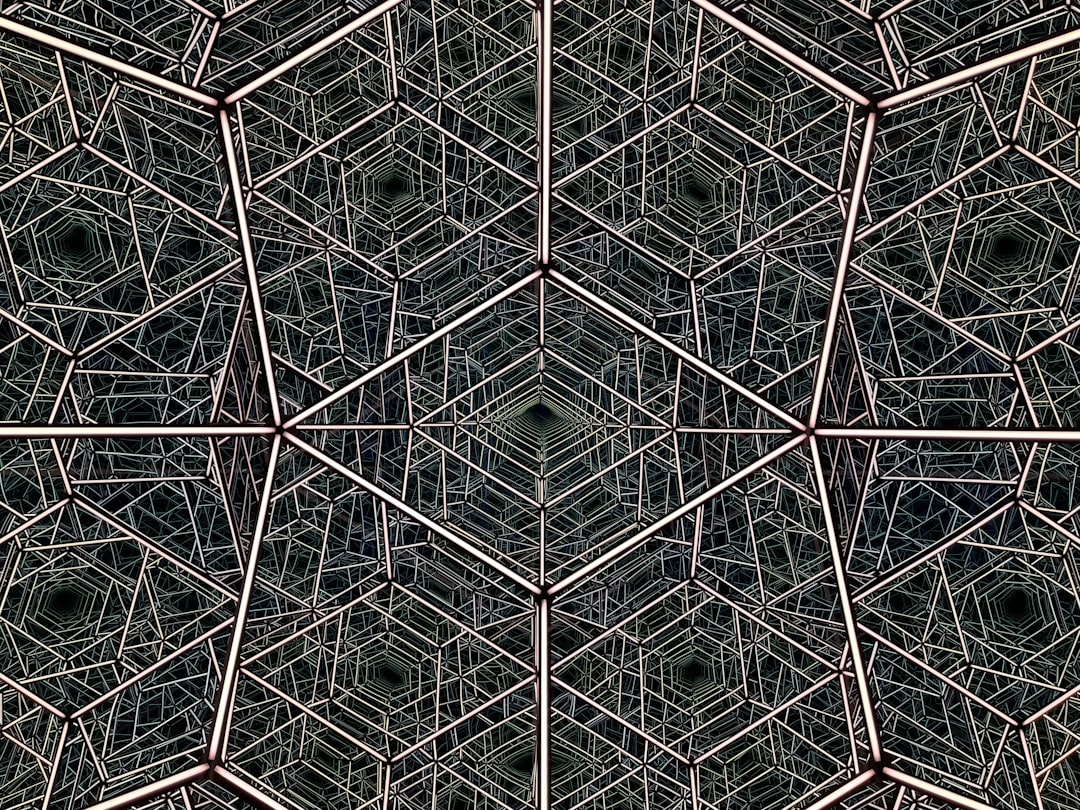Saturn, the sixth planet from the Sun, is renowned for its stunning rings and unique atmospheric phenomena. Among its many wonders, one of the most intriguing features is the hexagonal cloud pattern located at its north pole. This striking geometric formation has captivated scientists and astronomers alike since its discovery in the early 1980s by the Voyager spacecraft.
The hexagon spans approximately 14,500 kilometers (about 9,000 miles) across, making it larger than Earth itself. Its distinct six-sided shape stands in stark contrast to the swirling clouds and dynamic storms that characterize much of Saturn’s atmosphere. The hexagon’s formation and persistence have sparked a multitude of questions regarding its origins and the underlying physical processes that govern its existence.
As researchers delve deeper into the mysteries of this planetary phenomenon, they uncover a wealth of information about Saturn’s atmospheric dynamics and the forces at play in its upper atmosphere. The hexagon not only serves as a focal point for scientific inquiry but also as a reminder of the complexities and wonders of our solar system.
Key Takeaways
- Saturn’s hexagon is a unique and mysterious feature located at its north pole.
- Various theories have been proposed to explain the origin of Saturn’s hexagon, including natural atmospheric processes and fluid dynamics.
- The possibility of natural formation suggests that Saturn’s hexagon may be a result of complex interactions between winds and atmospheric conditions.
- The engineering in nature is evident in the symmetrical and geometrically precise shape of Saturn’s hexagon, challenging our understanding of natural phenomena.
- Research and studies on Saturn’s hexagon have provided valuable insights into the dynamics of planetary atmospheres and the formation of geometric patterns in nature.
Theories on the Origin of Saturn’s Hexagon
Numerous theories have emerged to explain the origin of Saturn’s hexagon, each offering a unique perspective on this enigmatic structure. One prominent hypothesis suggests that the hexagon is a result of atmospheric waves interacting with the planet’s rotation. This theory posits that the hexagonal shape arises from a combination of jet streams and the Coriolis effect, which influences the movement of gases in Saturn’s atmosphere.
As these atmospheric waves propagate, they can create stable patterns that manifest as geometric shapes, such as the hexagon observed at the north pole. Another theory proposes that the hexagon is a product of convection currents within Saturn’s atmosphere. In this scenario, warm air rises and cool air sinks, creating a series of rotating vortices.
When these vortices interact with one another, they can form stable patterns that resemble polygons. This theory aligns with observations of other planetary atmospheres, where similar geometric formations have been documented. The interplay between these various forces may contribute to the maintenance of the hexagon’s shape over time.
The Possibility of Natural Formation

The possibility that Saturn’s hexagon is a naturally occurring phenomenon has intrigued scientists for decades. Natural formations often arise from complex interactions within a system, and Saturn’s atmosphere provides an ideal environment for such processes to unfold. The planet’s rapid rotation and thick atmosphere create conditions conducive to the development of large-scale patterns.
Researchers have conducted experiments using fluid dynamics to simulate Saturn’s atmospheric conditions, revealing that hexagonal shapes can emerge under specific circumstances. These experiments suggest that the hexagon is not merely a random occurrence but rather a stable structure resulting from the underlying physics of fluid motion. The natural formation of such geometric patterns is not unique to Saturn; similar shapes have been observed in other planetary atmospheres and even in laboratory settings.
This reinforces the idea that nature has a remarkable ability to create order from chaos, leading to the emergence of complex structures like Saturn’s hexagon.
Engineering in Nature
| Topic | Metrics |
|---|---|
| Biomimicry | Number of engineering designs inspired by nature |
| Biomechanics | Force and movement analysis in natural organisms |
| Bio-inspired materials | Development of materials based on natural structures |
| Ecological engineering | Application of ecological principles to engineering design |
The concept of “engineering in nature” refers to the idea that natural processes can produce intricate designs and structures that resemble human engineering feats. Saturn’s hexagon exemplifies this notion, as its six-sided shape appears almost too perfect to be a product of random atmospheric dynamics. This has led some researchers to draw parallels between natural formations and human-made designs, suggesting that nature itself employs principles akin to engineering.
In many ways, the hexagon serves as a reminder of nature’s ingenuity. The stability and symmetry of the structure reflect underlying physical laws that govern fluid dynamics and atmospheric behavior. Just as engineers utilize mathematical principles to design efficient structures, nature appears to harness similar principles to create stable patterns in planetary atmospheres.
This intersection between natural phenomena and engineering concepts invites further exploration into how these processes can inform our understanding of both planetary science and engineering design.
Characteristics of the Hexagon
Saturn’s hexagon is characterized by its striking geometric shape and dynamic behavior. Each side of the hexagon measures approximately 4,000 kilometers (about 2,500 miles) in length, with its vertices marked by powerful storms that exhibit wind speeds exceeding 300 kilometers per hour (approximately 186 miles per hour). The hexagon itself is composed of clouds that vary in color and density, creating a visually captivating spectacle against the backdrop of Saturn’s golden atmosphere.
One notable feature of the hexagon is its remarkable stability over time. Despite being subjected to the turbulent forces of Saturn’s atmosphere, the hexagonal shape has persisted for decades without significant alteration. This stability raises questions about the underlying mechanisms that maintain its form and suggests that there may be deeper physical processes at work within Saturn’s atmosphere.
Additionally, observations have revealed seasonal changes in the hexagon’s appearance, indicating that it may be influenced by variations in solar radiation and atmospheric conditions.
Research and Studies on Saturn’s Hexagon

Research on Saturn’s hexagon has intensified since its discovery, with numerous studies aimed at unraveling its mysteries. Scientists have employed various observational techniques, including ground-based telescopes and space missions like Cassini, to gather data on the hexagon’s structure and behavior. These studies have provided valuable insights into the dynamics of Saturn’s atmosphere and have helped refine existing theories regarding the formation and maintenance of the hexagonal pattern.
Equipped with advanced imaging technology, Cassini captured stunning images of the hexagonal feature from multiple angles and wavelengths. These observations allowed researchers to analyze the hexagon’s cloud patterns, wind speeds, and seasonal variations in unprecedented detail.
The wealth of data collected during the mission has laid the groundwork for future studies aimed at further elucidating the complexities of this extraordinary planetary phenomenon.
Scientific Explanations for the Hexagon’s Shape
The scientific explanations for Saturn’s hexagon’s unique shape are rooted in fluid dynamics and atmospheric physics. The interplay between jet streams and rotational forces creates conditions conducive to the formation of stable geometric patterns. As gases move through Saturn’s atmosphere, they can organize themselves into coherent structures due to factors such as temperature gradients and pressure differentials.
One key aspect of understanding the hexagon’s shape lies in examining how atmospheric waves propagate through Saturn’s upper atmosphere. These waves can interact with one another, leading to constructive interference that reinforces specific patterns while dampening others. This process may help explain why the hexagon maintains its six-sided form despite being subjected to turbulent atmospheric conditions.
By studying these interactions, scientists can gain deeper insights into not only Saturn’s atmosphere but also similar phenomena observed on other planets.
Comparisons to Other Planetary Features
Saturn’s hexagon is not an isolated phenomenon; it shares similarities with other planetary features observed throughout our solar system. For instance, Jupiter’s Great Red Spot is another iconic atmospheric feature characterized by its persistent storm system.
Additionally, researchers have noted that similar polygonal shapes can be found in laboratory experiments simulating fluid dynamics under specific conditions. These comparisons underscore the universality of certain physical principles governing fluid motion across different environments, whether on distant planets or within controlled laboratory settings. By examining these similarities, scientists can draw broader conclusions about atmospheric behavior and gain insights into planetary formation processes.
The Role of Cassini Mission in Studying Saturn’s Hexagon
The Cassini mission significantly advanced our understanding of Saturn’s hexagon through its extensive observations and data collection over more than a decade. Launched in 1997, Cassini arrived at Saturn in 2004 and quickly began capturing high-resolution images and data on various aspects of the planet, including its rings, moons, and atmospheric phenomena like the hexagon. One of Cassini’s most notable contributions was its ability to observe seasonal changes in Saturn’s atmosphere, including variations in the hexagon’s appearance over time.
By monitoring these changes, scientists were able to correlate them with shifts in solar radiation and atmospheric dynamics, providing valuable insights into how external factors influence this remarkable feature. The mission’s findings have not only deepened our understanding of Saturn’s hexagon but also contributed to broader discussions about planetary atmospheres across our solar system.
Speculations on Extraterrestrial Involvement
While scientific explanations for Saturn’s hexagon primarily focus on natural processes, some speculations have emerged regarding potential extraterrestrial involvement in its formation or maintenance. These theories often stem from a fascination with unusual planetary features and humanity’s innate curiosity about life beyond Earth. However, it is essential to approach such speculations with caution and rely on empirical evidence when drawing conclusions about extraterrestrial influences.
The scientific community largely agrees that there is currently no substantial evidence supporting claims of extraterrestrial engineering or manipulation regarding Saturn’s hexagon. Instead, researchers emphasize that understanding this phenomenon requires a thorough examination of natural processes and physical laws governing planetary atmospheres. While it is intriguing to consider alternative explanations, grounding scientific inquiry in observable data remains paramount for advancing knowledge about our universe.
The Mystery of Saturn’s Hexagon
In conclusion, Saturn’s hexagon stands as one of the most captivating features within our solar system, embodying both beauty and complexity. Its striking geometric shape has sparked numerous theories regarding its origin and maintenance while serving as a testament to nature’s ability to create order from chaos. Through extensive research efforts—particularly those conducted during the Cassini mission—scientists have made significant strides toward unraveling the mysteries surrounding this extraordinary phenomenon.
As researchers continue to explore Saturn’s atmosphere and gather data on its unique features, they remain committed to deepening our understanding of planetary dynamics across our solar system. While questions about extraterrestrial involvement may linger in popular discourse, it is essential to prioritize empirical evidence when seeking answers about phenomena like Saturn’s hexagon. Ultimately, this enigmatic structure invites ongoing inquiry into the wonders of our universe while reminding humanity of nature’s remarkable capacity for complexity and beauty.
The intriguing phenomenon of Saturn’s hexagon has sparked numerous discussions regarding its formation and potential engineering. For those interested in exploring more about this captivating topic, you can read a related article that delves into the mysteries of Saturn’s atmospheric patterns and their implications. Check it out here: Saturn’s Hexagon: Nature or Engineering?.
FAQs
What is Saturn’s hexagon?
Saturn’s hexagon is a six-sided jet stream located at the planet’s north pole. It is a unique and distinctive feature of the planet’s atmosphere.
Is Saturn’s hexagon a natural occurrence?
Yes, Saturn’s hexagon is a natural occurrence and is believed to be a result of the planet’s complex atmospheric dynamics.
Could Saturn’s hexagon be engineered by extraterrestrial beings?
There is no scientific evidence to support the idea that Saturn’s hexagon is engineered by extraterrestrial beings. The current understanding is that it is a natural phenomenon.
How was Saturn’s hexagon discovered?
Saturn’s hexagon was first discovered by the Voyager spacecraft in the early 1980s. Subsequent observations by the Cassini spacecraft provided more detailed information about this unique feature.
What causes the hexagon shape in Saturn’s atmosphere?
The exact cause of the hexagon shape in Saturn’s atmosphere is not fully understood, but it is believed to be related to the planet’s powerful jet streams and the interaction between different layers of the atmosphere.
